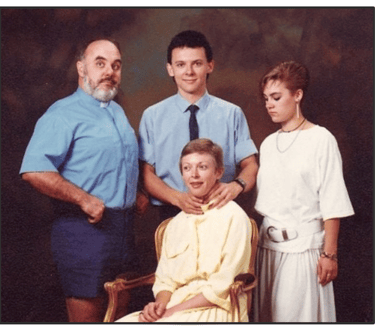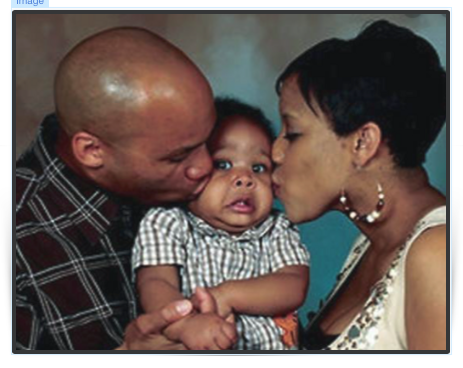
Hypnosis, EMDR, CBT,
Andrea Gutsche, RP
Lasting change is possible when we work directly with the unconscious mind where our memories and limiting beliefs are housed
Internal Family Systems (IFS)
The way nature designed us makes it nearly impossible to "just get over it."
Climbing Mount Everest in flip-flops—for many this describes the agonizing process of healing pain and trauma. What drives that frustration is the understanding that we are from nature, a part of nature, and nature is naturally self-balancing, restorative and regenerative. Healing is hard—but perhaps it shouldn’t be so hard? Are we missing something? As it turns out, yes! As a therapist I was missing something—and this is how I discovered it...
Schwartz started having clients talk to these Parts, at times forcefully in order to defeat their control. The results were disastrous—his clients got sicker.
The part responded directly to Schwartz through the client, “I don’t really want to beat you.”


Schwartz spent decades decoding the world of our parts. The basic premise of IFS is that we are born multiple, we are born with parts (such as Curiosity, Joy, Playfulness, Compassion) and born with a Self (some might call this spirit or soul). However when we experience shock, pain and trauma the Self retreats, which forces the part to take on the role as our sole protector.
How do Parts protect?
Protection is dual action, firstly the Protector sequesters the hurt part so its big emotion stays trapped inside that time bubble (IFS calls these (often young) traumatized shamed, sad, fearful parts "Exiles"), then. simultaneously the Protector manages our behaviour. By hijacking our mind, brain and body (putting thoughts and sensations into us) the Protector controls us so that we avoid any interaction that might mirror and trigger the same pain and "sense of badness" the Exile feels. When we get upset our emotions bleed through that time bubble and we activate pain in the hurt Exile. A triggered Exile has incredible capacity to blend with our present bodies either mildly, or forcefully consuming us with overwhelming feelings.
When an Exile possesses us with fiery emotions, a Firefighter Part rushes in to douse the flames. Firefighters force us into extremes of diverson such as drinking, binging, porning, cutting, raging, suiciding. When clients tell me they had a "Freak out" or"totally lost it" they are describing an Exile or a Firerfighter overtake. Protector Manager Parts don't like Firefighters and upset Exiles so Protectors try everything to maintain our behaviour with rigid control so we don’t ever upset the inner system. A Manager can bypass our Self so completely and entirely that we may loose a lifetime being forced into repeating behaviours such as people-pleasing, controlling, approval-seeking, judging, sabotaging, etc,.
IFS is not hypnosis—it’s an internal conversation with ones parts. It is during these conversations (and yes Parts will chat with us) that we understand that parts are not metaphor, nor are they conjured from imagination. IFS proposes that parts are more akin to conscious inner beings who have unique values, qualities, and personality, and that none have ill intention. When a Protector part is activated it means this conscious force is able to manipulate our reactions and choices. For example, if a part doesn’t agree with your medical treatment it has the power to cause medications to be ineffective (e.g. You can’t fix this insomnia, I use it to keep you alert and safe!). It's a big u-turn for medical professionals to understand the importance of knowing if a part is driving behaviour such as OCD, anxiety, depression, bipolar, and suicidal thoughts or if biology is the driving agent (genetics, head injury, environmental toxins etc).


Why is IFS revolutionary? An IFS therapist does not see a client as mentally ill or mentally disturbed. The therapist wants to know our parts because all parts have a positive intention that has evolved into the negative, non-beneicfial behaviour that effects our current life. We want to understand and honour the role of the Protector because it will lead the client to the Exile where stuck pain and shame be unburdened by a client's Self. When we meet our Protector Parts they are exhausted, weary and scared, and even at times angry and resentful because while they are acutely aware that their methods are damaging and ineffective, they feel trapped because no one else has stepped in to help the Exile. The Protector sees no way out because it is duty-bound to protect. As Schwartz explains, “In IFS we offer hope to a hopeless system”.




I thought to myself, this is kind of healing is not supposed to be possible!


"A part of me loves my parents and a part of me is terrified by them."


IFS protocol guides us through the healing process—first it gets a client back in touch with the Self (soul, spirit, my wisdom, centeredness etc.) and from that compassionate, heart-centered place the unburdening of our Protectors and Exiles can unfold. When we are in Self we are natural healers. This process (from contacting Parts to unburdening stuck emotions in Exiles) guides us back home to balance, restoration and regeneration—the way we are naturally born.
We are a part of nature
In the 1980s Schwartz began interviewing the thirty bulimics in his outcome study who had failed to stop binging and purging after receiving treatment. When participants articulated the “parts” of themselves that had blocked progress, the doctor first wondered if they all had Disassociative Identity Disorder (formerly known as Multiple Personality Disorder) but then on honest reflection, Schwartz realized that he too had these conflicting “inner parts” and “inner voices”. Curious about the idea that perhaps these parts were invented by the mind as metaphor for traumatic experiences and unresolved emotions, Schwartz started having clients talk to these parts, at times forcefully in order to defeat their control. The results were disastrous—his clients got sicker. Then came the client who changed everything—she arrived at session with cuts on her wrist, having been pushed by her “cutting part”. Schwartz was so upset that he had the client internally dialogue with the “Cutter” for two hours until the part begrudgingly promised to let her be. Finally, success!—so he thought.
Next session the client arrived with a cut slashed across her face. Schwartz recalls, “I shifted then out of utter despair. I emotionally collapsed inside. Spontaneously I spoke directly to her part, “I can’t beat you at this. This is a dangerous game.” The part responded directly to Schwartz through the client, “I don’t really want to beat you.” This moment of human connection instantly shifted the doctor into curiosity. He asked, “Why do you do this to her (force her to cut)?” The part replied, “When she was being abused I had a job to do—to protect her. I had to get her to leave her body to contain her rage because it (the rage) would get her more abuse.” This realization that a part’s intention is well-meaning, that it protects us during trauma and pain was the “ah-ha” moment that became the bases for Internal Family Systems therapy. Schwartz realized that unresolved trauma is never in the past—the experience is trapped in a kind of time bubble of "forever now"—we continue marching on with life but not the Protector and the wounded, these parts carry the pain forever, and their struggle can blend into our present life, potentially even daily.
If a Part doesn’t agree with your medical treatment it has the power to cause medications to be ineffective.
Insomnia Part says, "You can’t fix this insomnia, I use it to keep you alert and safe!"
Parts control our behaviour below the level of conscious awarenss. Copyright Awkward Family photos.
Parts took on protective roles during times of childhood stress, pain and trauma. Copyright Awkward Family photos.
I felt confident that working with the unconscious mind through hypnosis and EMDR brought clients to a kind of “central hub” where pain, trauma and memories waited to be healed from the body, brain and mind. However, I always felt cautious when working with the unconscious because it demonstrated “quantum like” qualities—it organized itself outside of linear time (past, present and future). The unconscious is like entering an uncharted universe where the rules of physics ‘need not apply’ and I wondered how stumbling around in there could impact a client’s healing and mental health?
This caution is the reason why I got so excited when I took a trauma course through Internal Family Systems therapy (IFS) given by the developer of IFS, Dr. Richard Schwartz. FINALLY an evidenced-based step-by-step protocol proven safe for the unconscious mind! During the IFS course, I witnessed people healing in ways that boldly challenged assumptions held by the standard medical model. For example, a client’s eyes rolled upward and he became silent with a vacant gaze. Therapists would use standard safety and stabilization protocol to bring a client back from a disassociated state. This protocol takes a bit of time. In the IFS session, disassociation was handled differently. Schwartz asked the client (still staring vacantly), “Can the part that just took you out please step aside?” and in an instant the client returned to the session, alert and ready to continue therapy. I thought to myself, "this is not supposed to be possible!" To grasp what makes IFS so revolutionary we must begin by understanding what or “who” was Dr. Schwartz was talking to when he asked that ‘part’ to step aside.
Return to top, left column.
At some point we’ve all likely expressed how we feel using parts language, such as the arrest of a chronic shoplifter who admits, “A ‘part’ of me wanted to get caught today.” Or the person who says, “I need my job—but a ‘part’ of me hopes I’ll get fired.” Even when we eliminate the word ‘part” in our sentence it is still implied, for example, ‘I hate that I still care" really means "I hate the part of me that still cares" . We also have a sense that at times ‘something’ is able to control us. Have you ever experienced not being able to stop from returning to a toxic relationship? Another classic sign that a part has overtaken you is saying sweetly into the phone, “Sure I’d love to help you to move out of your apartment on Sunday” then hanging up enraged that something inside stopped you (yet again) from saying "no". These are ways in which parts puppeteer our lives.
Parts have the power to project thoughts into our mind and brain (I am not good enough etc) and parts have the ability to manifest physical sensations in our bodies (creating panic attacks, dizzy spells, etc). Parts have the formidable power to override our autonomy, goals, dreams and even personal values to make us self-sabotage and even behave addictively. So how did Dr. Schwartz come in contact with parts and what exactly are they? His story of discovery and understanding is amazing and humbling.
copyright Andrea Gutsche 2026